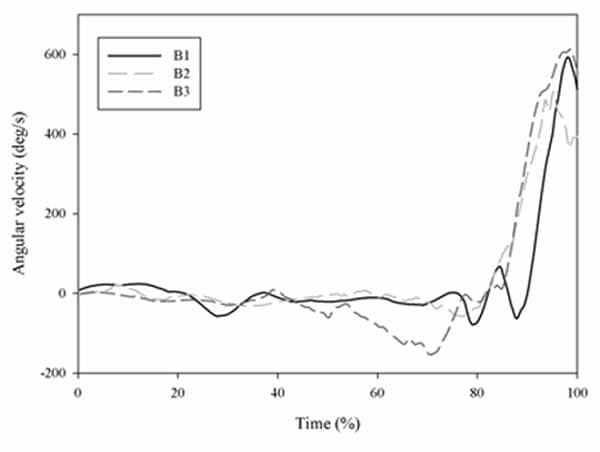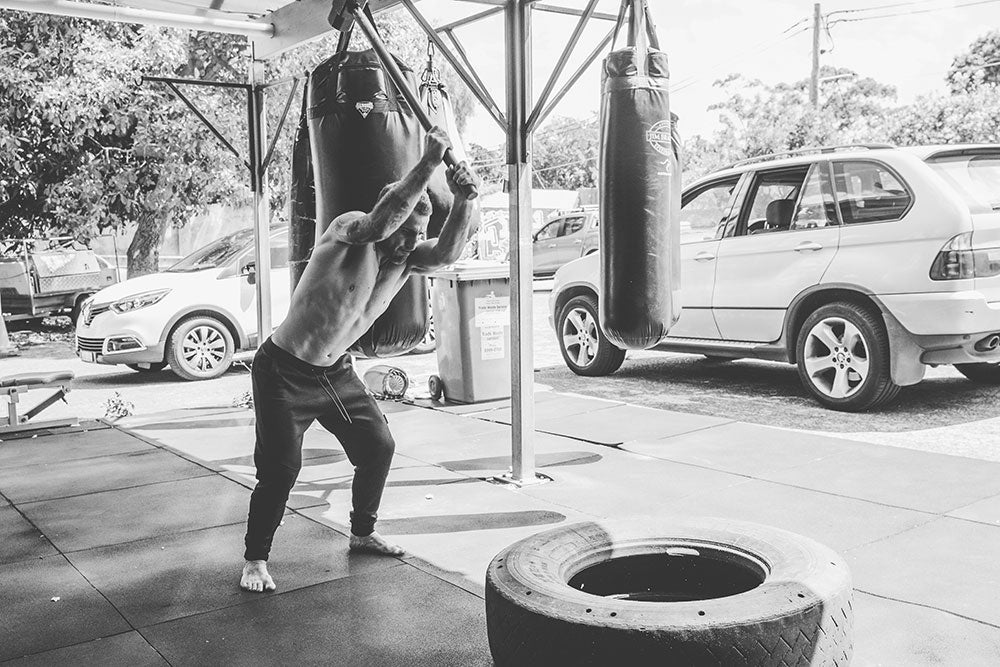Your Cart is Empty
February 11, 2020
1 CommentOnto the second part of this series on how to improve your punching power for boxing, kickboxing, and MMA! Before we get started, recall the most important points made thus far:
|
Category |
Arm Extension |
Trunk Rotation |
Push Off Extension of back leg |
Total |
|
"Knock-out" Artists |
24.05% |
37.30% |
38.65% |
100% |
|
"Players" |
25.43% |
41.76% |
32.81% |
100% |
|
"Speedsters" |
24.72% |
41.73% |
32.55% |
100% |
Table II: Percent of Contribution to Force of Punch
Let’s go back to this chart from Filminov et al.’s classic paper. Although it shows that legs may play the biggest role in supplying that KO power, you cannot ignore the contribution of trunk rotation.
The trunk, or core, is comprised of your abdominal muscles as well as certain muscles in your lower back. As part of the kinetic chain, it is responsible for transferring the vertical ground reaction force generated from your back leg push-off into your power arm for delivery of a horizontal punch force, mainly through a rotational movement. Without this action, none of the awesome leg power you have developed will count for anything! A recent study in 2017 by Tong-Iam et al demonstrates this in three Thai professional boxers, also showing that trunk rotation is most active in the final 20% of a punch motion.


Note that once again, the ORDER in which you activate muscles matters in developing a strong punch. This means shadowboxing and drills are key!
Reference: Journal of Physical Education and Sport
Another interesting finding from this study was that the boxer who punched with the most force had generated his peak fist velocity right before impact. The other two participants were only able to generate 97% of peak velocity at this point. So what does this mean? Likely that those boxers were crowding their punches, preventing them from getting to top speed in time. This means it is imperative to work on your RANGE and optimal EXTENSION with your trunk rotation as well.

Now, we already established in the previous article that the king of lower back development is the deadlift. As far as trunk rotation is concerned, the external and internal obliques are the abdominal muscle groups which are perhaps the most important to develop. Let’s say you are an orthodox fighter throwing a straight right. You would be rotating your trunk to the left. This motion is aided by contraction of your left-sided internal obliques and right-sided external obliques. The opposite pattern occurs for rotation to the right, like when throwing a left hook.
For this article, I am going to recommend exercises which a) provide more functional carry-over to actual punching, and b) are less prone to injure you. That means you won’t see 100-rep sit-ups (repetitive spine flexion can cause or aggravate vertebral disc herniation) or Russian twists (excessive twisting places lots of pressure on your spine’s facet joints). Your core is actually more efficient in RESISTING motion than creating it. And the more stable it remains during rotation, the more efficiently it can transfer elastic energy over into your punches. This will then help you punch harder with good form for longer even when you are exhausted.
 Internal Obliques |  External Obliques |
Full Contact Twist/Standing Barbell Landmine Twist: works the entire mechanism of the punch from the ground up. But it is particularly effective for strengthening the rotational core muscles. When you twist to one side with the barbell held in front of you, your obliques will be firing hard to RESIST the torque. Try to perform this movement slowly to increase the time under tension.
For a nice breakdown of this exercise, refer to this earlier article:https://engageind.com/blogs/articles/mma-workouts-rotational-exercises-to-improve-core-strength
Side Bridge: improves core stabilization, highly activates your obliques, and can be done anytime anywhere all while placing low pressure on the spine. Sounds like a winner to me.

Standing Cable Twist:perform this by grabbing a handle at chest height and then slightly rotating away from the cable attachment. You do not need to twist your torso all the way around. Remember that the aim is to improveROTATIONAL STABILITY. Stop the motion when you feel a significant opposing force and hold for a few seconds. This will challenge your obliques by placing them under anti-rotation stress. Perform this exercise slowly and controlled.

Sledgehammer Swings/Medicine Ball Slams: variety is the spice of life and this applies to training as well. If you must do one fun core exercise which is dynamic and engages the core to actively move, then look no further than swings/slams. Perform these explosively and give yourself plenty of recovery time in between sets. These will work the entire punching mechanism, so expect an intense full-body workout.

Ab Wheel Roll-Out: no core routine should be without this exercise. It works the obliques but also heavily targets therectus abdominis (aka the “six pack”). Sit-ups and crunches work the rectus through spine flexion. But the safer method of activation is to put the muscle in a position to resist spine extension. Both the roll-out and planks do this quite effectively. You will also feel the burn in your deltoids, pectorals, and lats. If you are feeling adventurous, try starting the roll-out from a standing position.

Finally, it is also key to strengthen the transverse abdominis, the innermost layer of abdominal muscles which play a big role in trunk stability.

Any stability exercise mentioned above will work this muscle, especially ab wheel roll-outs and planks. EMG studies have also shown high activation with the birddog exercise.
These exercises are sure to improve your trunk stability and rotation generation, so give them a try. Ask your coaches how to best implement them in your strength and conditioning program, but remember that your technical training is still the number one priority. Keep training hard!
September 07, 2024
September 07, 2024
September 06, 2024
Sign up to get the latest on sales, new releases and more …

Katie Smith
February 12, 2020
Dang, such a great article!!